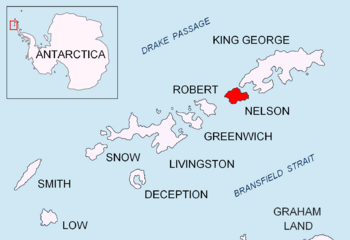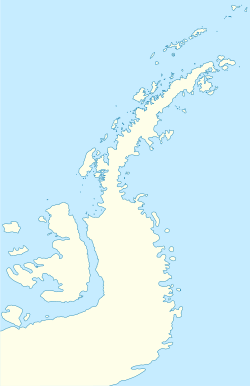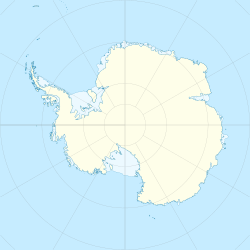Grace Rock facts for kids

Location of Nelson Island in the South Shetland Islands
|
|
|
Location of Grace Rock
|
|
| Geography | |
|---|---|
| Location | Antarctica |
| Coordinates | 62°21′32.3″S 58°59′22.5″W / 62.358972°S 58.989583°W |
| Administration | |
| Administered under the Antarctic Treaty System | |
| Demographics | |
| Population | Uninhabited |
Grace Rock is a small rock formation located in a very cold part of the world called Antarctica. It is found in the Bransfield Strait, which is a body of water near the continent. This rock lies about 1.7 kilometers (or 0.93 nautical miles) off the southeast coast of Nelson Island. Nelson Island is part of a group of islands known as the South Shetland Islands.
Grace Rock got its name in 1961 from the UK Antarctic Place-Names Committee. It was named after a British ship called the Grace. This ship was a sealing vessel, which means it was used to hunt seals. The Grace was captained by H. Rowe and came from a city in England called Plymouth. The ship visited the South Shetland Islands during the years 1821 and 1822.
Contents
What is Grace Rock?
Grace Rock is a small, rocky outcrop that sticks out of the ocean. It is not an island that people can live on. Instead, it is a landmark in the icy waters near Antarctica. Rocks like Grace Rock are important for navigation. They help ships know where they are in the vast ocean.
Where is Grace Rock located?
Grace Rock is situated in the South Shetland Islands. This group of islands is located north of the Antarctic Peninsula. The South Shetland Islands are known for their cold climate and icy landscapes. They are a popular spot for scientific research and tourism.
Why is Antarctica important?
Antarctica is the coldest continent on Earth. It is covered almost entirely by ice. This continent is very important for understanding our planet's climate. Scientists study its ice sheets and wildlife to learn about global warming. Antarctica is also home to unique animals like penguins and seals.
History of Grace Rock's Name
The name "Grace Rock" connects this small landform to the history of exploration in Antarctica. The British sealing vessel Grace was one of many ships that explored these waters long ago. These early explorers often named new discoveries after their ships or important people.
Who named Grace Rock?
The UK Antarctic Place-Names Committee is responsible for naming places in the British Antarctic Territory. They named Grace Rock in 1961. This committee helps to create maps and keep records of all the features in the region. Their work ensures that places have clear and official names.
What was a sealing vessel?
A sealing vessel was a type of ship used in the 1800s. These ships traveled to cold regions like Antarctica to hunt seals. Seal hunting was a big industry back then. People used seal blubber for oil and seal skins for clothing. The Grace was one of these ships that visited the South Shetland Islands.
Images for kids




